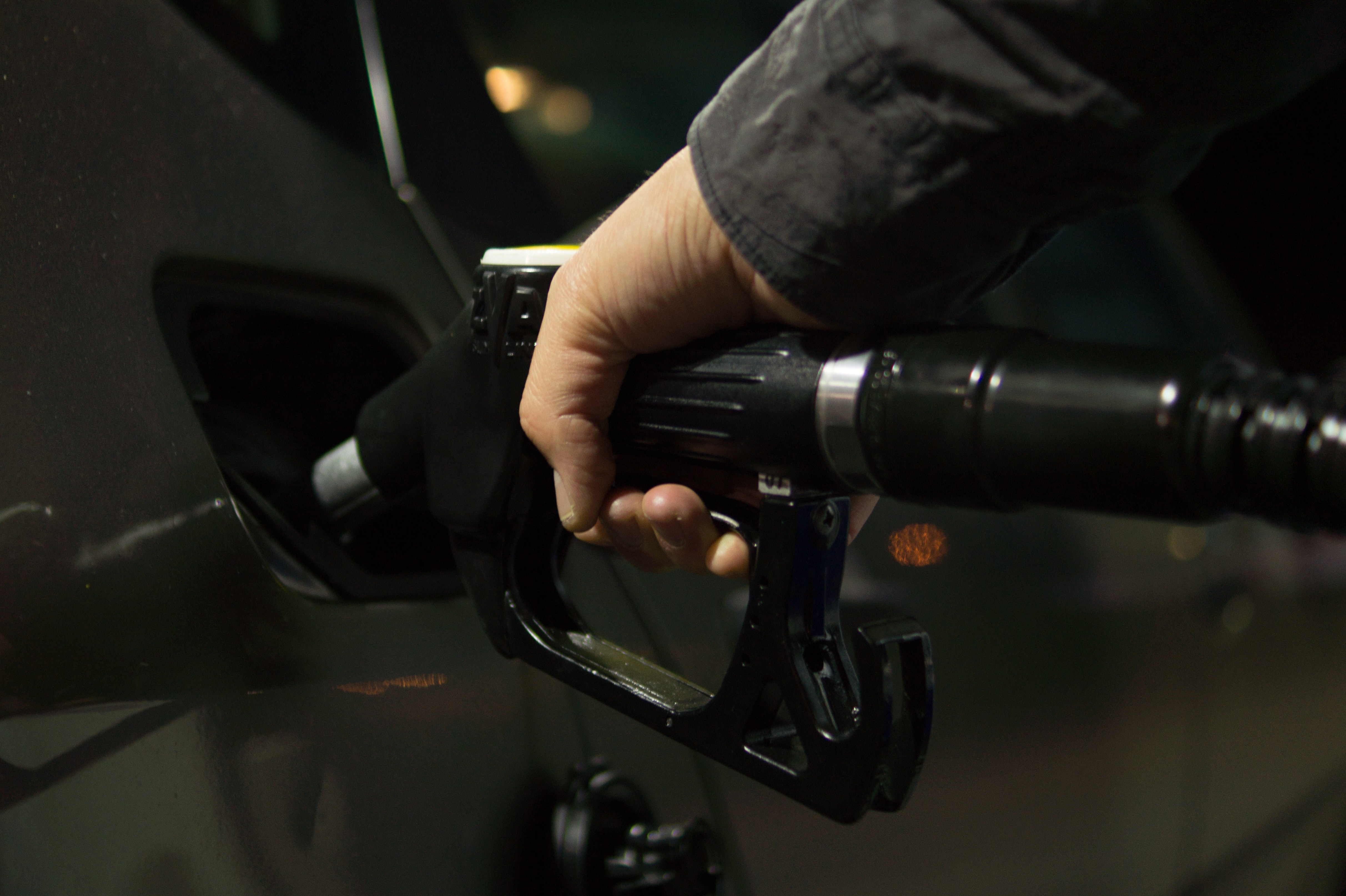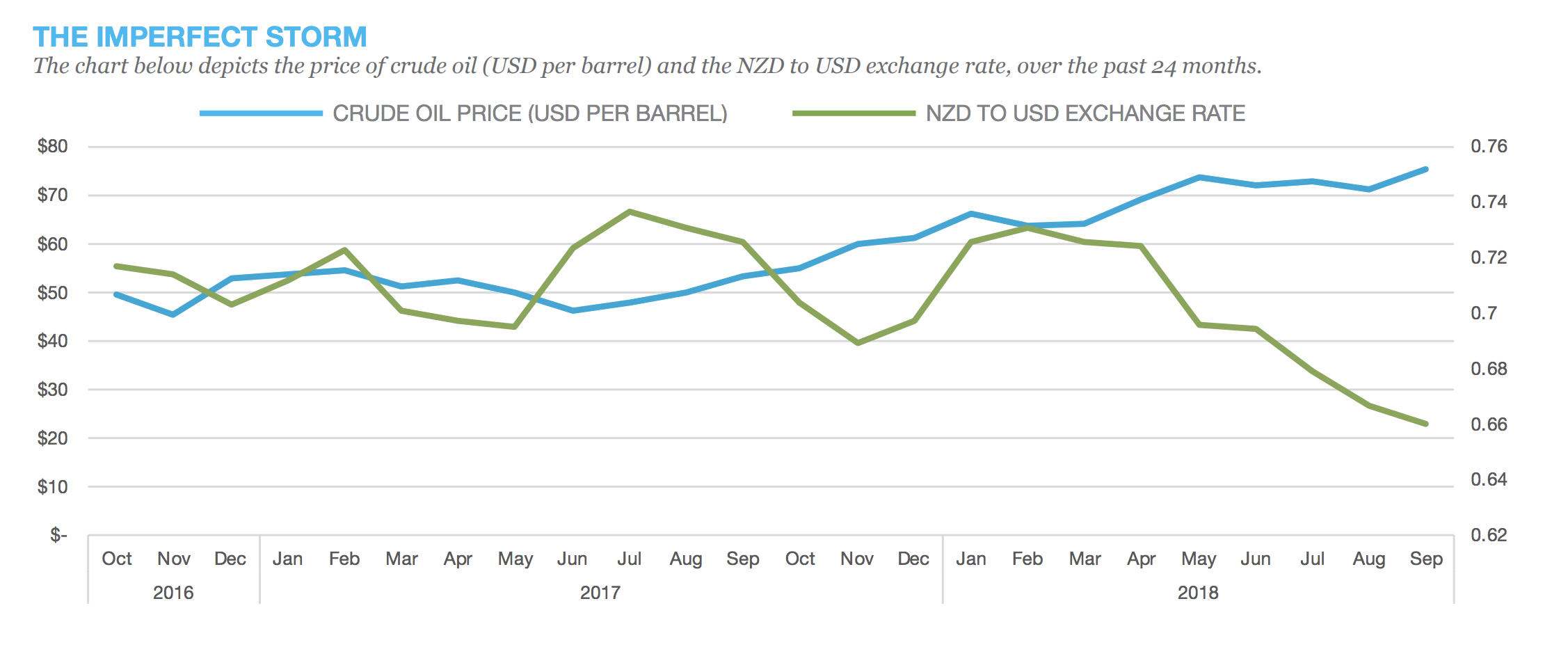Fuel 101: unpacking the rising cost of petrol

2018 has seen the price New Zealanders pay for fuel at the pump increase 35cpl, a jump of 17% in less than a year. Although fuel prices have already been widely discussed in the media, we wanted to unpack why we have experienced such an extreme rise in prices, and how it is impacting Kiwis around the country.
WHY ARE WE PAYING SO MUCH?
Unfortunately for Kiwis, much of the recent fuel price hikes can be attributed to the ‘imperfect storm’ of global and local economic conditions. Crude oil, both imported and domestic, has seen a steady increase in price. According to Statistics NZ,
the June 2018 quarter saw prices for imported crude oil increase 11.3%, resulting in these costs being passed
on to petroleum products, such as petrol, diesel, and aviation fuel – an increase of 10.9% At the same time, the New Zealand dollar hit a three year low against the USD in late September, making the cost of importing oil, as well as shipping costs, much higher. Both of these changes are depicted in the chart below.

Adding to the storm has been government imposed taxes, which have hit at both a national and regional level. Auckland’s Regional Fuel Tax came into effect on July 1, adding 11.5cpl onto fuel purchased within the region. On top of this, on 1 October a national fuel excise tax of 3.5cpl was put in place, pushing national prices up to $2.47cpl (as of 5 October according to MBIE).
While the combination of these conditions has certainly contributed to increasing fuel prices, much of the discussion around the rise in prices is due to the retailer margins. According to MBIE, fuel retailer margins are now just shy of 30cpl, 4% higher than a year prior, and almost three times the rate of 10 years ago. Increases in margins are not attributable to external factors such as exchange rates and taxes, and leave many consumers, government and media pointing their fingers at the retailers as to why our fuel prices are the highest they have been in a number of years.
HOW IS IT IMPACTING CONSUMERS?
The most obvious impact of higher fuel prices, and one we have talked about before, is the higher share of consumer budgets that must be allocated to fuel. In September 2018, fuel accounted for 10.7% of consumer’s card spending – 1.3 share points higher than a year prior. Fuel’s share gain was at the expense of a range of storetypes – largely discretionary, such as Clothing, Department Stores and Footwear (losing a combined 0.4 share points). However Supermarkets and Dairies also saw a relatively large loss of wallet share, down 0.2 share points on a year prior. While not cause for alarm (these retailers still hold the majority of card spending by a large margin), the loss of share for Groceries – a household staple – puts into perspective the impact high fuel prices are having on households.
During September the entire country saw fuel spending increase 18%, but many areas saw growth well above the national average. While growth in regions neighboring the Auckland area are likely due to Aucklander’s avoiding the fuel tax (Waikato saw fuel spending increase 29.3%), areas elsewhere in the country also saw significant growth. The South Island, where prices are largely more expensive, saw spending increase as much as 19.2% in some areas, while fuel spending in the Manawatu was up 22.1%.
While there is obvious immediate impact on consumers from higher fuel costs, there may also be higher costs for other goods and services in the future. As freight becomes more expensive, and importing costs increase with a weaker NZD, retailers may be forced to increase the prices of their goods and services to compensate for decreasing margins. The impacts of high, and increasing, fuel prices will impact the retail economy throughout New Zealand, and Marketview will be keeping a close eye on upcoming consumer behaviour to monitor these flow-on effects.